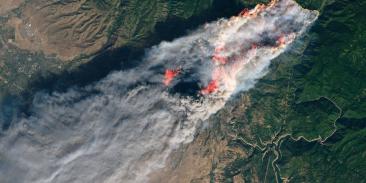Bush Administration Reviewing Hawaiian Islands Coral Reef Reserve
Environmental Defense expressed extreme concern over the Bush administration’s legal review of the Executive Orders that established the Northwestern Hawaiian Islands (NWHI) Coral Reef Ecosystem Reserve. In December of 2001 President Clinton protected the fragile NWHI by declaring the area a Coral Reef Ecosystem Reserve. This followed a century of efforts initiated in 1909 by Theodore Roosevelt’s declaration of a NWHI Wildlife Refuge. The Bush administration review may rescind or significantly weaken the Reserve’s protections. National and regional organizations representing 2 million people, including the Hawaii Fishing and Boating Association, wrote to Commerce Secretary Evans expressing concern about this review.
Reaching 1,200 miles northwest of the Main Hawaiian Islands, the Northwestern Hawaiian Islands (NWHI) are largely uninhabited shoals and atolls which comprise an isolated and remote network of hundreds of miles of pristine waters and 70% of the coral reefs under U.S. jurisdiction.
“This area is the last safe haven for monk seals, sea turtles, and millions of sea birds. If the Northwest Hawaiian Islands breeding grounds for turtles are not adequately protected, Hawaii’s entire $700 million marine tourism industry will feel the impact,” said Environmental Defense scientist Stephanie Fried.
“The Northwest Hawaiian Islands Reserve is vital to the cultural heritage of Native Hawaiians. The area serves as a nursery for the potential replenishment of main Hawaiian Islands fisheries. The reserve must be kept in place to protect Native Hawaiian heritage and Hawaii’s fisheries for today and for future generations,” said Native Hawaiian fisherman, Isaac Harp.
“The process of establishing the NWHI Reserve involved more public participation, input, and support than any other natural resource management decision in recent history in the State of Hawaii,” said KAHEA executive director, Cha Smith
In 2000, Congress also expressed firm support for protection in the NWHI by amending the National Marine Sanctuaries Act and creating a special protected status which allowed for restrictions on activities that would negatively impact this extremely unique and fragile ecosystem. Environmental Defense, with assistance from KAHEA and others, has produced a report detailing efforts by the Western Pacific Regional Fishery Management Council to overturn or weaken the Executive Orders. More information on the NWHI is available at www.kahea.org.
New Environmental Defense/KAHEA report:
More information on the NWHI:
With more than 3 million members, Environmental Defense Fund creates transformational solutions to the most serious environmental problems. To do so, EDF links science, economics, law, and innovative private-sector partnerships to turn solutions into action. edf.org
Latest press releases
-
Bill Would Explore Responsible Growth of Domestic Seafood
August 4, 2025 -
Legislation Introduced to Reverse Tax Hikes on Clean Energy
August 2, 2025 -
Groups File Lawsuit Challenging Trump EPA’s Delay of Protections Against Oil and Gas Methane Pollution
July 31, 2025 -
New study shows how sectoral emissions shape today’s warming and tomorrow’s risks
July 30, 2025 -
EPA Administrator Zeldin Delays Commonsense Methane Pollution Protections
July 29, 2025 -
NEW: U.S. Government’s Own Analysis Shows Repealing Tailpipe Pollution Standards Will Sharply Increase Gasoline Prices
July 29, 2025










